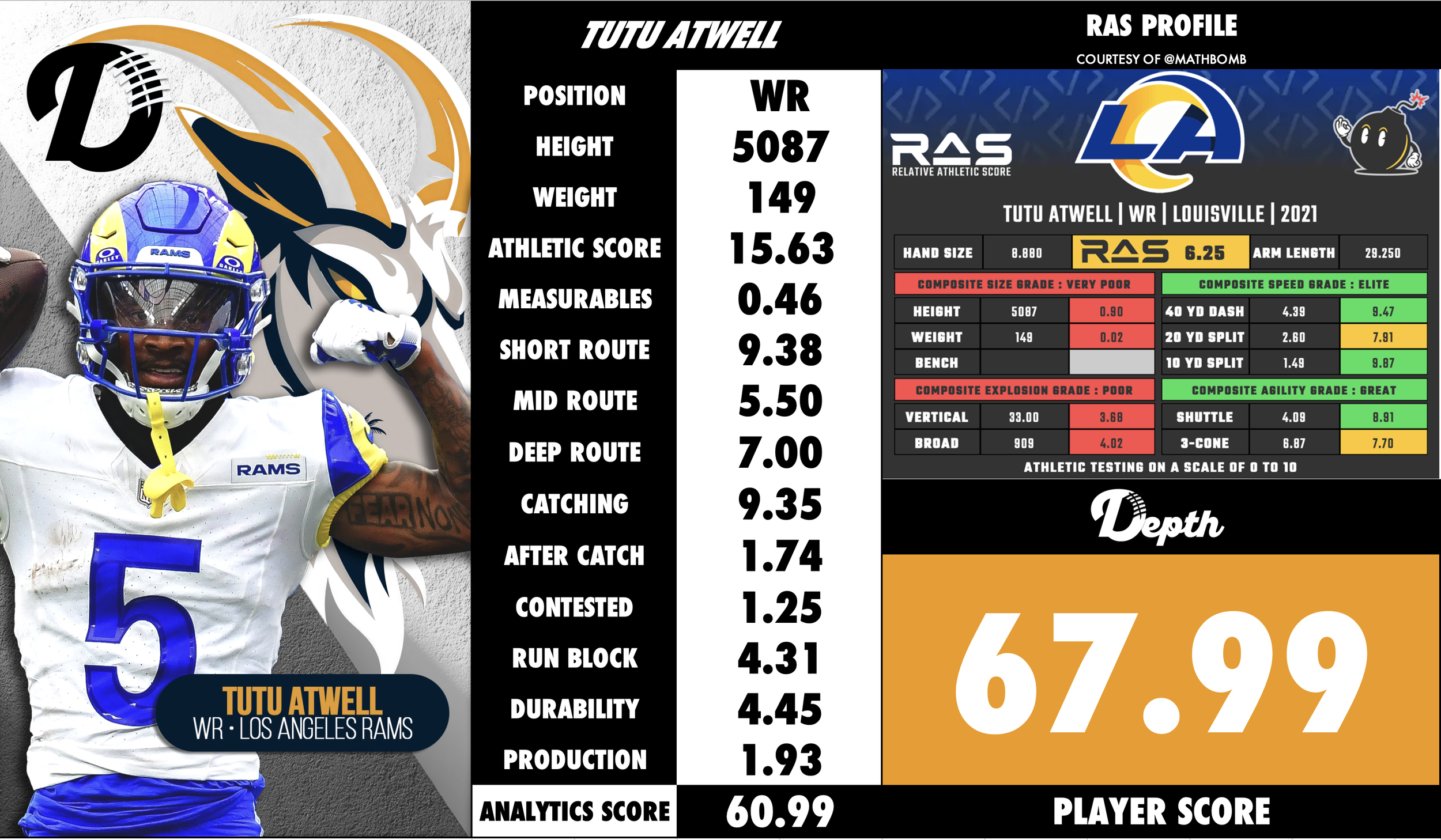
Tutu Atwell
Summary
Tutu Atwell was selected in Round 2 (#57 Overall) in the 2021 Draft out of University of Louisville. Atwell arrived in the NFL as a lightning‑fast wide receiver whose primary appeal is deep speed, vertical separation, and explosive big‑play ability. At Louisville he showed he could take the top off a defense and track deep throws with savvy. However, his profile came with clear caveats: undersized frame (~5′9″, ~165 lbs at one measure) and durability/physicality concerns at the pro level. His projection was as a potential change‑of‑pace weapon or slot/deep threat rather than a traditional every‑down boundary outside receiver.
Strengths
Elite speed and explosion: Atwell can quickly accelerate and stretch defenses vertically. His ability to threaten deep‑throws consistently was a standout in college. Bleacher Report
Excellent ball‑tracking and body control: Despite his smaller stature, he shows the ability to adjust in the air, high‑point the ball, and make over‑the‑shoulder catches. Bleacher Report
Big‑play potential / deep‑threat capability: He offers the “home run” element—once free in space, he can turn short throws into long gains due to his speed. SI
Slot versatility and acceleration from motion: He is effective coming off the line in motion or from slot alignments where his speed can be maximized. NFL Draft Buzz
Competitive spirit and willingness to contribute in multiple ways: Despite his size, Atwell showed effort in blocking and special‑teams work, signaling a team‑first attitude. Bleacher Report
Weaknesses
Undersized frame / limited physical mass: Atwell’s lack of bulk and small frame are frequently cited as risks, both for durability and for physical matchups against NFL defenders.
Release and press‑coverage vulnerability: When pressed at the line or faced with physical cornerbacks, his small size and limited initial power create challenges winning reps. Bleacher Report
Limited route‑tree breadth and contested‑catch dominance: While explosive, he may not yet have the fullness of a polished route tree or the elite contested‑catch strength of bigger receivers. SI
Durability and long‑term workload questions: Given his light frame and history of injuries/opt‑outs, some evaluators were skeptical of his ability to carry heavy snap loads over seasons.
Dependent on scheme and usage for success: His ceiling and impact are highly tied to being used in roles that exploit his speed rather than forcing physical outside‑wins or heavy blocks.
Fit & Outlook
Atwell fits best in an offense that leverages tempo, motion, spread alignments and vertical threats—one that allows him to operate from the slot or boundary, use his top‑end speed, and attack deep or in space rather than being relied upon as a physical outside blocker or every‑down possession receiver. He thrives when paired with a quarterback who can hit him in space or vertically, and when the offense uses him in creative alignments (jet motion, inside‑out routes, deep seam bursts). Looking forward, Atwell’s outlook is a classic high‑ceiling, high‑risk scenario. His floor is that of a dynamic change‑of‑pace receiver who can create splash plays, contribute in specialized packages, and be a complementary weapon. His ceiling, if usage and health align, is as a deep‑threat starter who forces defenses to respect the big play and opens up space for others. The keys will be durability, how the coaching staff schemes him, and whether he can continue to refine his route‑running, release, and physical engagements. If all those align, Atwell has the traits to be a significant offensive weapon.


